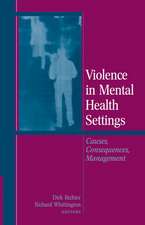Nicotine and Related Alkaloids: Absorption, distribution, metabolism and excretion
Editat de J. W. Gorrod, J. Wahrenen Limba Engleză Paperback – 28 oct 2012
Preț: 370.21 lei
Preț vechi: 389.70 lei
-5% Nou
Puncte Express: 555
Preț estimativ în valută:
70.84€ • 75.75$ • 59.06£
70.84€ • 75.75$ • 59.06£
Carte tipărită la comandă
Livrare economică 17 aprilie-01 mai
Preluare comenzi: 021 569.72.76
Specificații
ISBN-13: 9789401049368
ISBN-10: 940104936X
Pagini: 320
Ilustrații: XVII, 299 p.
Dimensiuni: 155 x 235 x 17 mm
Greutate: 0.45 kg
Ediția:Softcover reprint of the original 1st ed. 1993
Editura: SPRINGER NETHERLANDS
Colecția Springer
Locul publicării:Dordrecht, Netherlands
ISBN-10: 940104936X
Pagini: 320
Ilustrații: XVII, 299 p.
Dimensiuni: 155 x 235 x 17 mm
Greutate: 0.45 kg
Ediția:Softcover reprint of the original 1st ed. 1993
Editura: SPRINGER NETHERLANDS
Colecția Springer
Locul publicării:Dordrecht, Netherlands
Public țintă
ResearchCuprins
1 Biosynthesis and metabolism of nicotine and related alkaloids.- 1.1 Introduction.- 1.2 Alkaloid biosynthesis.- 1.3 Regulation of nicotine content in tobacco plants.- 1.4 Alkaloid transformations during senescence and curing.- Acknowledgement.- References.- 2 The mammalian metabolism of nicotine: an overview.- 2.1 Introduction.- 2.2 Primary carbon oxidation products of nicotine.- 2.3 The metabolism of cotinine.- 2.4 The metabolism of nornicotine.- 2.5 The metabolism of 4-(3-pyridyl)-4-oxobutyric acid.- 2.6 The N-oxidation of nicotine.- 2.7 Methylation reactions of nicotine and cotinine.- 2.8 Conjugation reactions.- 2.9 Conclusions.- Acknowledgement.- References.- 3 The roles of cytochrome P450 in nicotine metabolism.- 3.1 Introduction.- 3.2 Mechanisms of cotinine formation.- 3.3 Forms of cytochrome P450 participating in hepatic microsomal nicotine oxidation.- 3.4 Regulation of cytochrome P450 dependent nicotine metabolism.- Acknowledgements.- References.- 4 Nicotine metabolism beyond cotinine.- 4.1 Introduction.- 4.2 Oxidation of nicotine.- 4.3 Metabolism of cotinine.- 4.4 Conclusions.- References.- 5 N-Oxidation, N-methylation and N-conjugation reactions of nicotine.- 5.1 Introduction.- 5.2 N-Oxidation reactions of nicotine.- 5.3 N-Methylation reactions of nicotine.- 5.4 Glucuronidation reactions of nicotine.- 5.5 Nicotinamide nucleotide analogues of nicotine and cotinine.- References.- 6 Extrahepatic metabolism of nicotine and related compounds by cytochromes P450.- 6.1 Introduction.- 6.2 Pathways and enzymes of nicotine metabolism.- 6.3 Cytochrome—P450 isozyme specificity of nicotine metabolism.- 6.4 Extrahepatic metabolism of nicotine in relation to the localization of enzymes potentially participating in nicotine metabolism.- 6.5 Extrahepatic activation oftobacco-specific nitrosamines.- 6.6 Contribution of extrahepatic metabolism to the pharmacokinetics and toxicity of nicotine and related compounds.- 6.7 Unanswered important questions and suggestions for future work.- 6.8 Conclusions.- References.- 7 The metabolic fate of the minor tobacco alkaloids.- 7.1 Introduction.- 7.2 The metabolic fate of cotinine.- 7.3 ?-Nicotyrine.- 7.4 Other minor tobacco alkaloids.- Acknowledgement.- References.- 8 Nicotine and metabolites: analysis and levels in body fluids.- 8.1 Introduction.- 8.2 Nicotine and cotinine.- 8.3 3’-Hydroxycotinine.- 8.4 Glucuronic acid conjugates of nicotine, cotinine and trans-3’-hydroxycotinine.- 8.5 N-Oxides of nicotine and cotinine.- 8.6 N-Methylated derivatives of nicotine and cotinine.- 8.7 Nor- derivatives of nicotine and cotinine.- 8.8 Summary.- References.- 9 Kinetics of nicotine and its metabolites in animals.- 9.1 Introduction.- 9.2 Absorption kinetics and first-pass metabolism.- 9.3 Disposition kinetics.- References.- 10 Pharmacokinetics of (S)-nicotine and metabolites in humans.- 10.1 Introduction.- 10.2 Stable isotope methodology.- 10.3 Synthesis of labelled nicotine and metabolites.- 10.4 Analytical methodology.- 10.5 Pharmacokinetics of (S)-nicotine-3’,3’-d2.- 10.6 Pharmacokinetics of nicotine in smokers and nonsmokers.- 10.7 Bioavailability studies.- 10.8 Urinary excretion of nicotine metabolites.- 10.9 Pharmacokinetics of cotinine formation and elimination.- 10.10 Future studies.- 10.11 Conclusion.- Acknowledgements.- References.- 11 Sources of inter-individual variability in nicotine pharmacokinetics.- 11.1 Introduction.- 11.2 Absorption of nicotine.- 11.3 Distribution of nicotine.- 11.4 Metabolism of nicotine.- 11.5 Excretion of nicotine.- 11.6 Implications of inter-individualvariability in nicotine pharmacokinetics.- Acknowledgements.- References.- 12 Physiologically based pharmacokinetic modelling of nicotine.- 12.1 Physiologically based pharmacokinetic modelling.- 12.2 Potential utility of a PBPK model of nicotine.- 12.3 Development of the PBPK model of nicotine and cotinine in humans.- 12.4 Application of a multi-metabolite PBPK model of nicotine to exposure assessment.- 12.5 Low level nicotine exposure model.- 12.6 PBPK and nicotine pharmacodynamics.- 12.7 Summary.- Acknowledgements.- References.- 13 New methods for probing the disposition of nicotine in humans.- 13.1 Introduction.- 13.2 Regional catheterization.- 13.3 Positron emission tomography (PET).- 13.4 Nuclear magnetic resonance (NMR) techniques.- References.
Recenzii
the editors have done an excellent job in providing an update on the important issues of the biosynthesis, distribution, metabolism and excretion of nicotine... well referenced.... the quality of the figures and tables is very good... overall, this is an excellent review of the area, good value for money, fills a gap in the literature and I am sure will serve as the prime reference source for several years to come - Xenobiotica; The book, which is indexed, well edited and well produced, constitutes a state-of-the-art benchmark ... - Journal of Applied Toxicology












